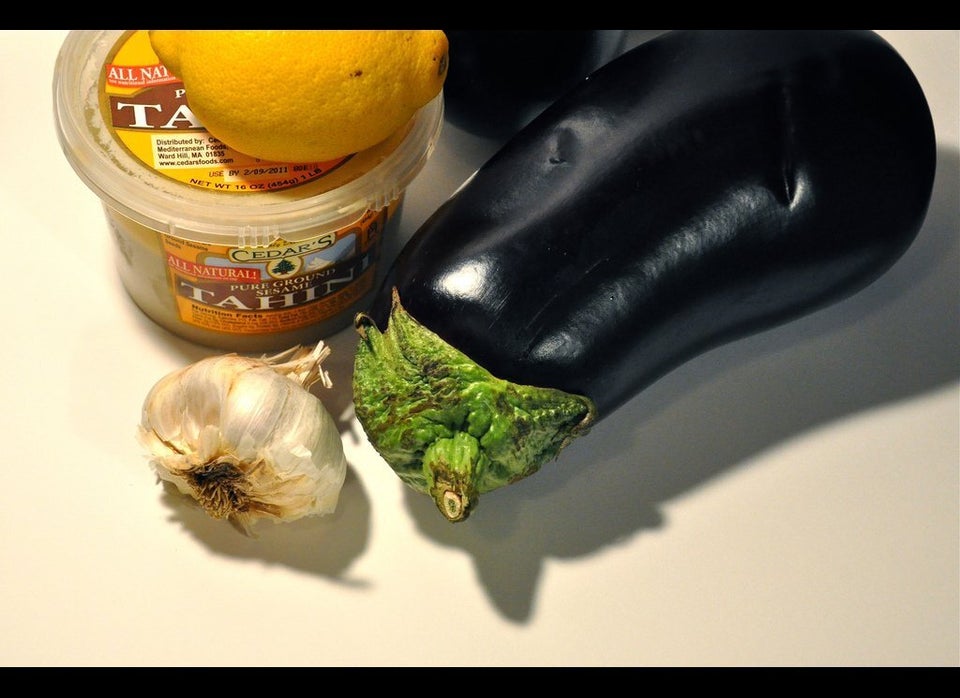Is it safe to say that, after Suspiria and The Beyond, we could all use a breather? I, for one, have had my fill of sadistic, stomach-knotting violence for, oh, at least the next couple days. (Nothing puts a damper on one's culinary enthusiasm like watching a dozen eyeballs get popped out like grapes from their peels.) So let's take a little trip back through the gauzy mists of time, to the studio era, when horror was beautiful, mellow, and unlikely to disturb either one's sleep or one's appetite.
I've seen Tod Browning's Dracula (1931), starring Bela Lugosi, more times than I can count. The same goes for James Whale's Frankenstein (1931), which, in any case, doesn't hold a cobwebbed candelabrum to Mel Brooks's classic Young Frankenstein (1974). But I realized that I had a gap -- a gaping, festering hole, in fact -- in my horror education. I'd never seen The Mummy (1932), starring Boris Karloff and directed by Karl Freund, the cinematographer of Browning's Dracula and a member of the cinematography team responsible for Fritz Lang's Metropolis (1927).
I mentioned needing a breather: Now consider the makeup session Karloff called "the most trying ordeal I have ever endured." You've read about how the ancient Egyptians made their mummies; here's how Universal Studios did it. As Gregory William Mank's Bela Lugosi and Boris Karloff: The Expanded Story of a Haunting Collaboration (2009) relates:
The 11:00 A.M. to 7:00 P.M. transformation took place in [Jack P.] Pierce's cosmetology sanctuary, where a photograph of King Seti II served as a model. Pierce pinned back Boris's ears, dampened his face and covered every facial area (including eyelids) with thin cotton strips, covered the cotton with collodion and went to work with spirit gum and an electric drying machine... Boris's only pleasures during the procedure: a cigarette and tea. The makeup application made speech virtually impossible and the star had to pantomime every time he wanted a fresh smoke. Then came beauty clay slicking back the actor's hair... 22 different colors of makeup covering the actors face, hands, and arms, 150 yards of acid-rotted linen (passed through an oven, so it looked decayed), bandages taped in the body joints so that the star could move, and a dusting of Fuller's earth.
Well, here's the big reveal: Karloff appears as a mummy for about five minutes, in the first scene. He doesn't even kill anyone as a mummy. A young archaeologist named Norton (Bramwell Fletcher) reads a forbidden papyrus; the mummy awakens; the mummy takes his papyrus back, and takes off. Norton dissolves into hysterical laughter -- which is impressively painful to listen to -- and we're later told that he "died laughing -- in a straitjacket." That's the last we see of this or any mummy. The next time we encounter Karloff, the resurrected priest Imhotep, he is a "modern" Egyptian named Ardath Bey, who wears a fez and a veritable Lone Ranger mask of kohl.
Watching Freund's Mummy is an amusing object lesson in just how much the American moviegoer's expectations have changed. Apart from the opening scene, for which Karloff nearly suffocated, there are virtually no special effects. There are no 3-D scarab beetles. If you were expecting a walking ACE® bandage, you were probably thinking of a different movie.
This Mummy is a love story with a horror flick trying to claw its way out. Without giving up too much in the way of plot, I can say that Imhotep's chief concern is being reunited with the reincarnation of an Egyptian princess for whom he defied the gods thirty-seven centuries earlier. He speaks slowly, is scrupulously polite, and can make you obey by staring very hard (not unlike someone else I know). Depending on how much you appreciate old-school filmmaking, you'll find him either unforgettably frightening or about as menacing as a sulky cab driver.
Charles Taylor on Salon.com made the case for the former back in 2000, calling The Mummy
"the most dreamlike and creepily erotic of horror films... With skin dried to look like parchment, Karloff's Imhotep is a nightmare vision of sexual desire that persists even as the body decays. Delicately and masterfully lighted, the film is a languorous classic of perverse romanticism."
With all due respect, I remain unconvinced. The Mummy is a clumsy, albeit entertaining, look at how horror has evolved over the years -- but where Dracula is eternal, this guy is really starting to show his age.
What's for dinner? The New Best Recipe instructs us that
"[i]n Middle Eastern countries, baba ghanoush is served as part of a meze platter.. which might feature salads, various dips, small pastries, meats, olives, other condiments, and, of course, bread. The driving force behind baba ghanoush is grill-roasted eggplant, sultry and rich. The dip's beguiling creaminess and haunting flavor come from tahini (sesame paste) enhanced with a bit of garlic and brightened with both fresh lemon juice and parsley."
I won't say baba ghanoush is more beguiling and haunting than The Mummy, but it's a close-run race. To make the dip, roast two large eggplants at 500° for an hour, flipping them every fifteen minutes. Let the eggplants cool before scooping out the yellow pulp and draining it in a colander. Move it to a food processor, and add a tablespoon of real lemon juice, a large minced garlic clove, two tablespoons of tahini, and salt and pepper. Process for about ten seconds, refrigerate for one hour, and serve with parsley, a little pool of olive oil, and pita wedges. Some people (e.g., me) are mildly allergic to eggplant; to prevent my baba ghanoush from liquefying and draining my insides, I balanced it with this delicious digestive-friendly hummus.
Related
Sign up for Peacock to stream NBCU shows.
to stream NBCU shows.
